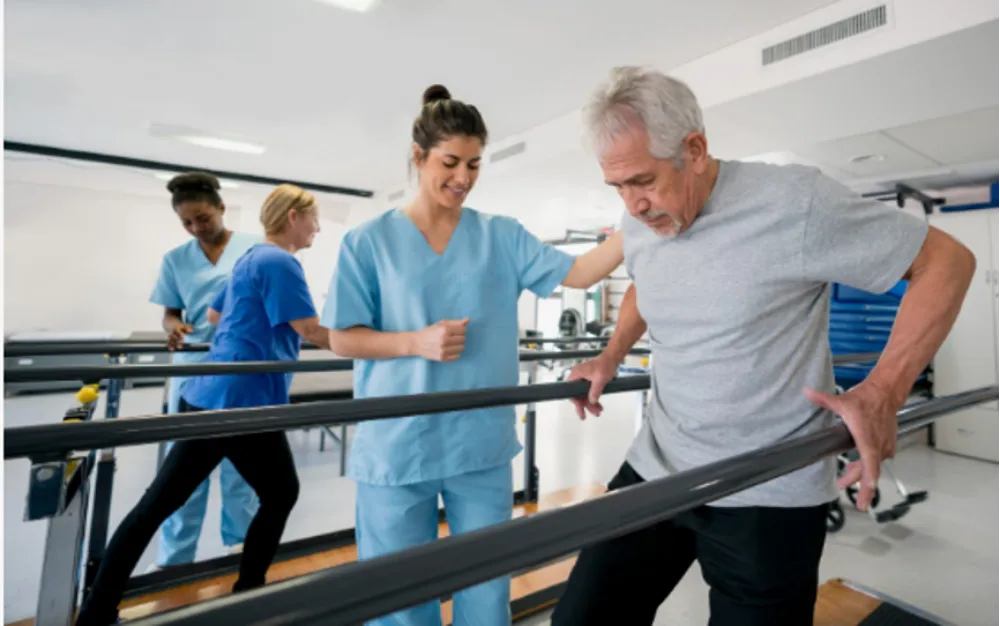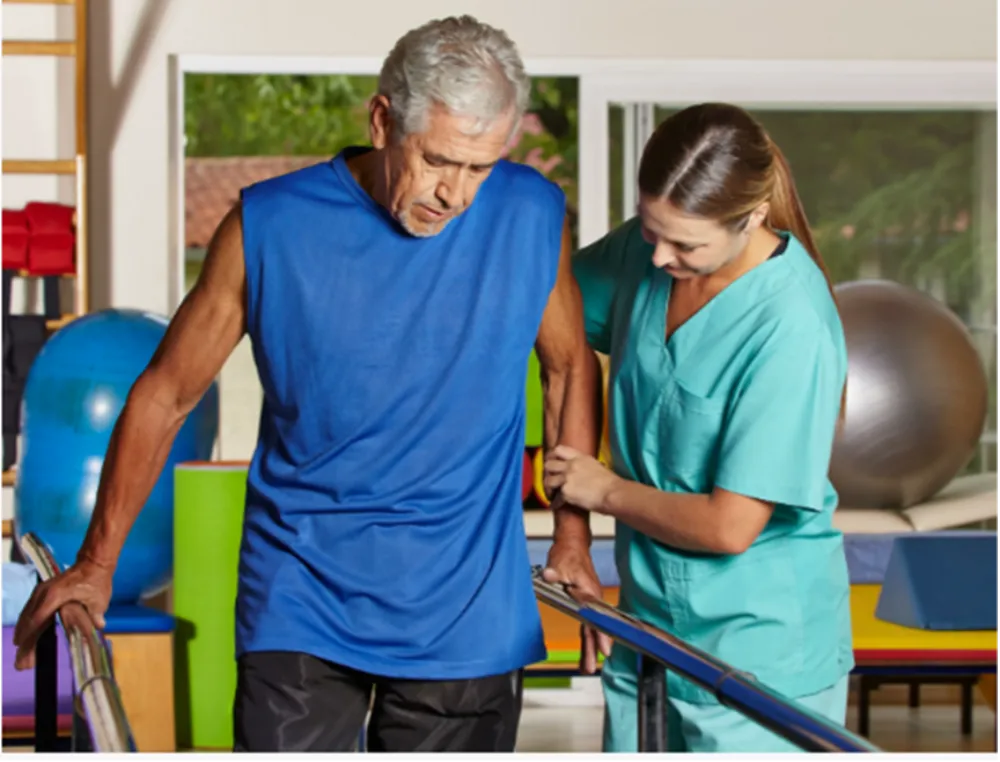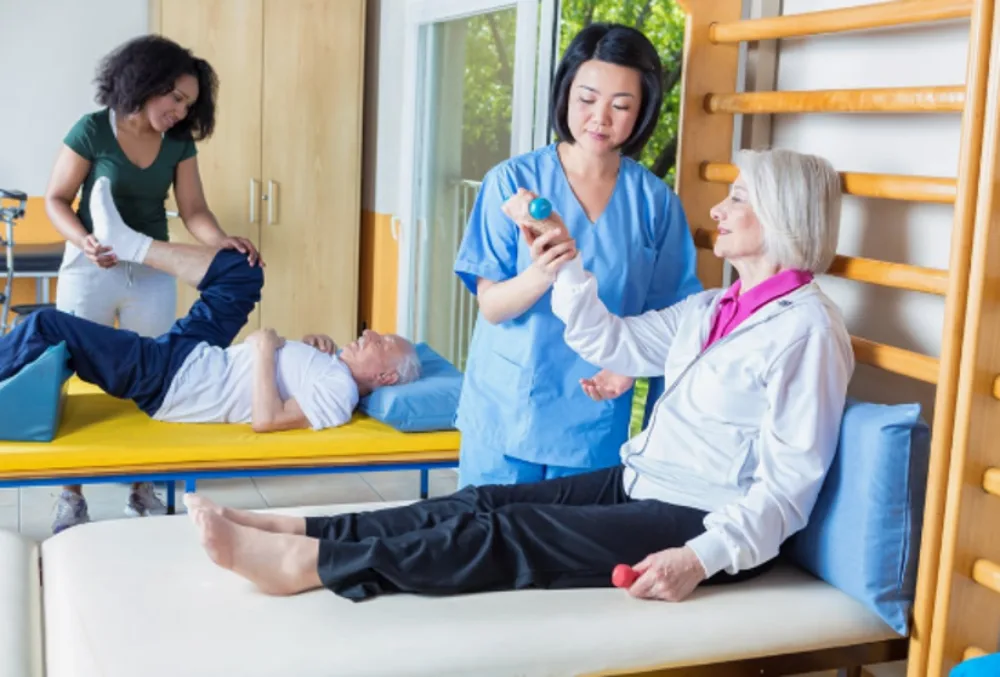A stroke damages brain tissue by interfering with the blood supply to the brain. Many deficits, such as weakness, paralysis, trouble speaking, and cognitive issues, can result from this damage. Following a stroke, stroke pt exercises are essential for restoring lost abilities and enhancing function.

Why Exercise After a Stroke is Important?
There are many reasons that stroke rehabilitation West Vancouver exercises are important. They include:
· Strengthens and Increases Mobility
Exercise aids in the restoration of muscle strength and coordination, which can enhance your capacity to carry out regular tasks like getting dressed, taking a shower, and walking.
· Diminishes Spasticity
Spasticity is a disorder that results in tense and rigid muscles. Flexibility can be increased and stiff muscles can be released with exercise.
· Improves Balance and Coordination:
Your balance and coordination will be impacted by a stroke. Retraining your brain and body to function more harmoniously can be achieved through exercise after stroke.
- Lessens Pain
Pain brought on by tense and weak muscles can be lessened by exercise.
· Enhances Mental Health
Mood swings brought on by a stroke can be lifted, stress levels lowered, and depression fought off by post stroke exercises.
Types of Post-Stroke Rehabilitation Exercises
There are many stroke rehab exercises including:
1. Exercises for Range of Motion:
After a stroke, these entail soft limb movements to promote flexibility and prevent stiffness.
2. Exercises for Strengthening:
These activities focus on particular muscle areas to restore strength lost as a result of weakness brought on by a stroke.
3. Stroke Therapy Exercises for Balance and Coordination:
These activities lower the risk of falls after a stroke by enhancing stability and coordination.
4. Walking and Gait Training:
Methods and drills are designed to help regain capacity for safe and effective walking.
5. Practice Functional Tasks:
Engaging in everyday stroke physical therapy exercises to improve independence and restore functional abilities compromised by stroke.
6. Cardiovascular Conditioning:
Exercises that enhance cardiovascular stamina and fitness, are essential for full recuperation and lowering the risk of recurrent stroke.
Post-stroke exercises are essential for improving strength, balance, coordination, and mental well-being, reducing spasticity and pain, and preventing further strokes. They include various types targeting different aspects of recovery.

Ot Exercises for Stroke Patients at Home
If patients continue to exercise at home, the rehabilitation process will be faster.
Here’s a sample home exercise program for stroke patients occupational therapy:
- Motion Range Exercises: Stretch and mobilize the afflicted limbs using mild movements. Ankle circles, wrist flexion and extension, and shoulder rolls are a few examples. Ten to fifteen repetitions of each movement.
- Strength Training: To improve weak muscles, use resistance bands or small weights. Leg lifts, wrist curls, and bicep curls are a few possible exercises. For each exercise, begin with 1-2 sets of 10–15 reps, then progressively increase as tolerated.
- Fine Motor Skills Practice: Practice by doing tasks like threading beads, using tweezers, and picking up small objects that require coordination and dexterity. Try to practice for ten to fifteen minutes every day.
- Balance Exercises: These rehabilitation exercises for stroke patients include exercises like heel-to-toe walking, standing on one leg, and utilizing a balancing board to enhance balance and coordination. Spend five to ten minutes each day doing these exercises.
- Practice Functional Tasks: To improve independence, practice daily tasks including getting dressed, taking care of yourself, and preparing meals. As abilities improve, progressively raise difficulty while breaking projects down into manageable steps.
- Task-Specific Training: Concentrate on exercises which are pertinent to the person’s everyday tasks and goals. This can entail getting practice with typing, writing, or using cutlery.
- Cardiovascular Conditioning: To enhance cardiovascular health and endurance, use aerobic exercises like swimming, cycling, or walking. Gradually extend the duration of your activity by starting with 10 to 15 minutes at a time.

Additional Considerations of Therapy Exercises for Stroke Patients
There are some considerations for after stroke rehabilitation exercises including:
– Exercises for Occupational Therapy
Occupational therapy exercises for stroke patients or OTs assist patients in regaining their independence in daily tasks. The goal of OT exercises is to enhance the abilities needed for work, play, and self-care.
– Physical Therapy Exercises
Patients can enhance their strength, balance, coordination, and mobility with the assistance of physical therapists. PT activities are designed to target particular stroke-related deficits.
– Home Exercise routine
Long-term healing requires a well-thought-out home exercise routine. You can safely and efficiently follow your therapist’s customized program at home.
exercises spasticity tbi patients at home
– Safety:
It’s crucial to begin your fitness routine cautiously and build up to a higher level over time. Never ignore your body’s need for rest. Consult your physician before beginning a new fitness regimen.
hand strengthening exercises after stroke
Home exercises are key for stroke recovery, offering motion range exercises, strength training, fine motor skill practice, balance exercises, functional tasks, and cardiovascular conditioning. Considerations include tailored occupational and physical therapy exercises, a structured home routine, and prioritizing safety.
Finding the Right Rehab for Stroke Patients Exercise Program:
To choose the best program for post stroke rehab exercises, consider these factors:
- Look for a program that is specifically designed for stroke rehabilitation.
- The program should be supervised by a qualified therapist (occupational therapist or physical therapist).
- It should be tailored to your individual needs and goals.
- Set realistic goals for yourself.
- Celebrate your progress, no matter how small.
- Find an exercise buddy or group to support you.
- Focus on the positive benefits of exercise, such as improved function and independence.

Conclusion
Rehabilitation after a stroke is a long-term process. However, with dedication and hard work, stroke pt exercises can play a vital role in helping you regain strength, and independence, and improve your quality of life. Remember, even small improvements can make a big difference in your daily life.
Follow our Radial website to get familiar with all types of rehabilitation exercises and Vancouver Physiotherapy .
Physio Exercises for Stroke Patients at West Vancouver Clinic
Stroke patients at the West Vancouver Clinic gain from specialized physiotherapy exercises made to meet their requirements and difficulties. These workouts use methods to increase function, strength, mobility, and coordination. Patients perform specific exercises guided by proficient physiotherapists to improve balance and coordination, strengthen weak muscles, and regain range of motion in their afflicted limbs. The goal of the clinic’s physical therapy team is to maximize recovery outcomes and assist patients in regaining confidence and quality of life after a stroke by using evidence-based therapies and continuously monitoring progress. Call us today to set up a session.